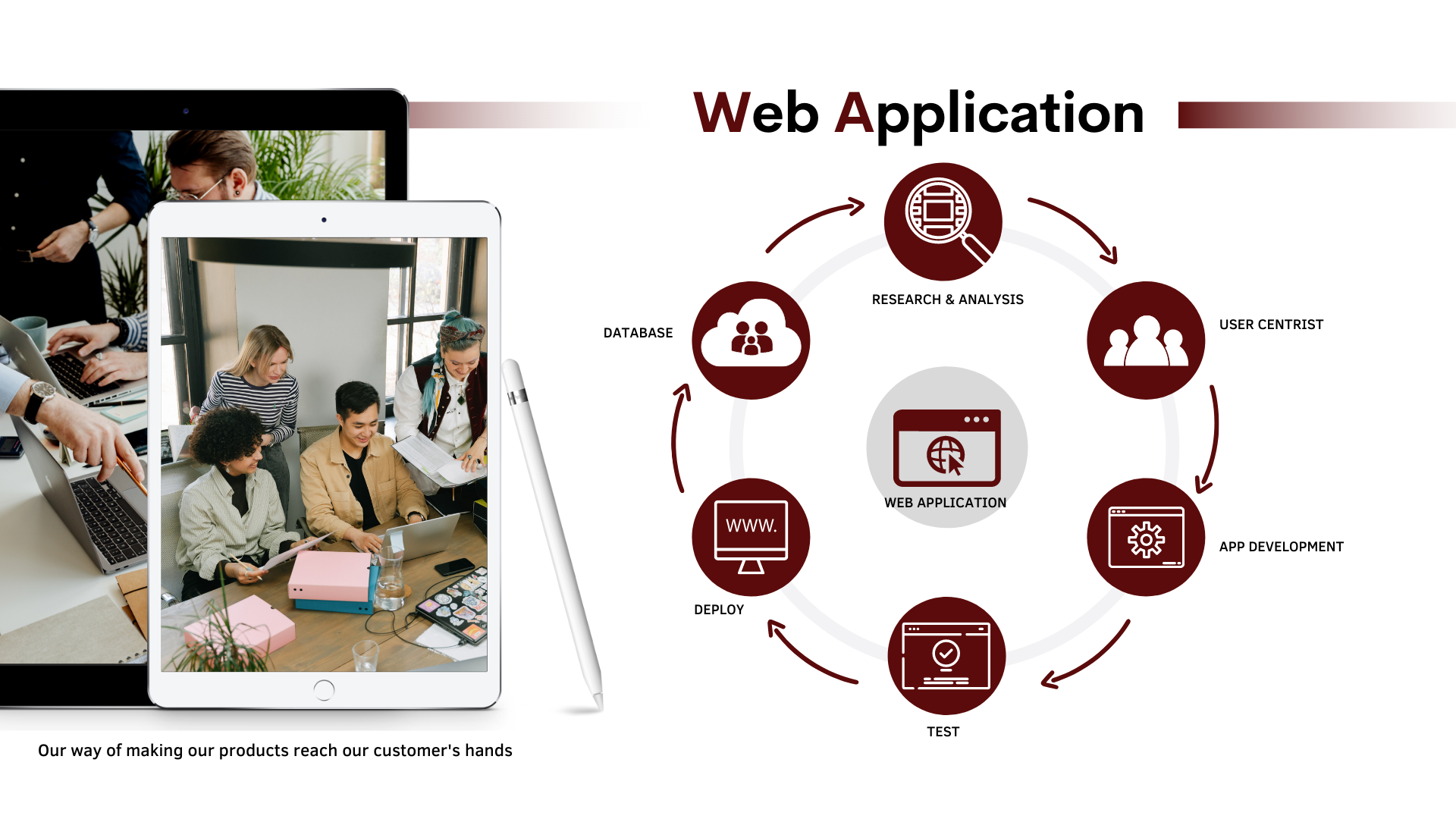Web Application
Nyla ออกแบบเว็บไซต์เฉพาะเจาะจงเพื่อธุรกิจของท่าน โดยไม่ใช้เทมเพลตหรือธีมสำเร็จรูปในการออกแบบและพัฒนาเว็บไซต์
เราออกแบบและพัฒนาเว็บไซต์ของท่านตั้งแต่เริ่มต้นเพื่อตรงความต้องการของท่านมากที่สุด
ดังนั้นท่านสามารถมั่นใจได้ว่าเว็บไซต์จะไม่เหมือนใครและดีที่สุดสำหรับธุรกิจของท่าน
Programming & Technology
- รองรับทุกระบบ Windows, Linux, MacOS, Mobile, Tablet
- ออกแบบใหม่ตั้งแต่ต้นให้ตรงกับความต้องการของลูกค้ามากที่สุด
- ออกแบบและพัฒนาได้ทั้ง Front-end และ Back-end
- รองรับการเชื่อมต่อข้อมูลแบบ REST API
- ระบบ Autentication จัดการการเข้าใช้งาน Application
- สะดวกสามารถเข้าใช้งานได้ทุกที่ทุกอุปกรณ์ที่มี Internet
- สามารถติดตั้งได้ทั้ง Server ของลูกค้าเองหรือระบบ Cloud
- เชียวชาญด้านระบบ Database (Database design)
ตัวอย่างระบบ Web Application
- ระบบเงินเดือน
- ระบบบริหารงานบุคคล
- ระบบบริหารห้องพักโรงแรม
- ระบบขายสินค้าออนไลน์
- ระบบบริหารจัดการลูกค้า
- ระบบจัดการงานซ่อมสินค้า
- ระบบสินค้าคงคลัง
- ระบบอื่นๆ ตามที่ลูกค้าต้องการ
ด้วยประสบการณ์กว่า 20ปี ทางด้าน Programming ทำให้ท่านมั่นใจได้ว่าไม่ว่าระบบอะไร
เราสามารถทำตามความต้องการของท่านได้ทุกรูปแบบ ด้วยเครื่องมือที่มีประสิทธิภาพและรวดเร็วในการพัฒนา

Language, Framework, Tools






Web Application
A web application, also known as a web app, is a software program that runs on a web server and is accessed through a web browser. Unlike traditional desktop applications, web apps can be accessed from any device with an internet connection, making them highly versatile and convenient.
Web applications are typically built using a combination of programming languages such as HTML, CSS, and JavaScript, as well as frameworks and libraries such as React, Angular, and Vue.js. These tools are used to create the user interface and handle the underlying functionality of the web app.
Web applications often rely on a back-end server for data storage and processing. This back-end can be built using various server-side technologies such as PHP, Ruby, or Python and databases like MySQL, MongoDB, or PostgreSQL.
Web applications can be divided into two main categories: static and dynamic. Static web apps are built using only HTML, CSS, and JavaScript, and are typically used for simple websites or brochure-style sites. Dynamic web apps, on the other hand, are more complex and interactive, and often involve a back-end server to handle data processing and storage.
Web application development often begins with the creation of a detailed project plan and wireframe, which outlines the features and functionality of the app. Next, the front-end and back-end are developed and integrated. The app is then tested across various devices and web browsers to ensure compatibility and fix any bugs.
Overall, web application development is a complex and constantly evolving field that requires a combination of technical skills, creativity, and careful planning. It is constantly evolving as new technologies and frameworks come out.
Our Software Development Team
A software development team is a group of individuals who work together to design, develop, test, and maintain software applications. A well-functioning software development team is crucial to the success of a software project and requires the following key components:
- Clear roles and responsibilities: Each team member should have a clear understanding of their role and responsibilities within the team.
- Strong leadership: The team should have a strong leader who can motivate and guide the team towards achieving their goals.
- Effective communication: Regular and effective communication among team members is essential for successful collaboration and problem-solving.
- Technical expertise: The team should have a mix of technical skills and expertise, including programming languages, software design, testing, and project management.
- Collaborative culture: The team should have a culture of collaboration and teamwork, where team members are encouraged to work together, share ideas, and provide constructive feedback.
- Continuous learning and improvement: The team should be committed to continuously learning and improving their skills and processes.
By having these components in place, a software development team can effectively collaborate, produce high-quality software, and achieve their project goals. It's also important to note that a successful software development team requires ongoing effort to maintain and improve team dynamics, processes, and technical skills.